Yuki Onodera, Architectural Bodies and Events “Guernapur” charcoal, crayon, gelatin silver print,
collage on canvas, 300 x 734cm, 2018
Yuki Onodera, Architectural Bodies and Events “Guernapur” charcoal, crayon, gelatin silver print,
collage on canvas, 300 x 734cm, 2018
After winning the Excellence Award at the first New Cosmos of Photography contest in 1991, Yuki Onodera relocated to Paris and has been widely successful around the world.
And since claiming France's most prestigious prize, the Prix Niépce in 2006, she has made great strides in contemporary photography and art, producing many innovative works. Onodera was invited to judge the New Cosmos of Photography in 2020. Due to the COVID-19 pandemic, she judged entries online instead of in person.
In this wide-ranging interview, we spoke with her about her impressions of the entries at the New Cosmos of Photography selection meeting, her own activities, and the sources of her ideas.
More young artists are creating research-based works, including one of the award-winning works in this competition. It certainly is interesting to take a factual document, stretching it into a fictional world in some cases, as one way to study history, make judgments, and incorporate that into a work of art.
But real researchers devote their whole lives to their research. So it's a pity when people feel self-sufficient enough, after borrowing only bits and pieces of research, to create something, because it obscures what they are creating. As Mr. Sawaragi said, if you take the stance of treating research or history as just more material for your work, with only a little knowledge and no serious thought, or if you try something just because it's trendy, you may wind up asking yourself “Did I start from such a low bar?”
I posed that question at the selection meeting because I wanted the artist to be more thoughtful in his approach and I wanted to see whether he could stand face-to-face with the documents themselves as an artist.

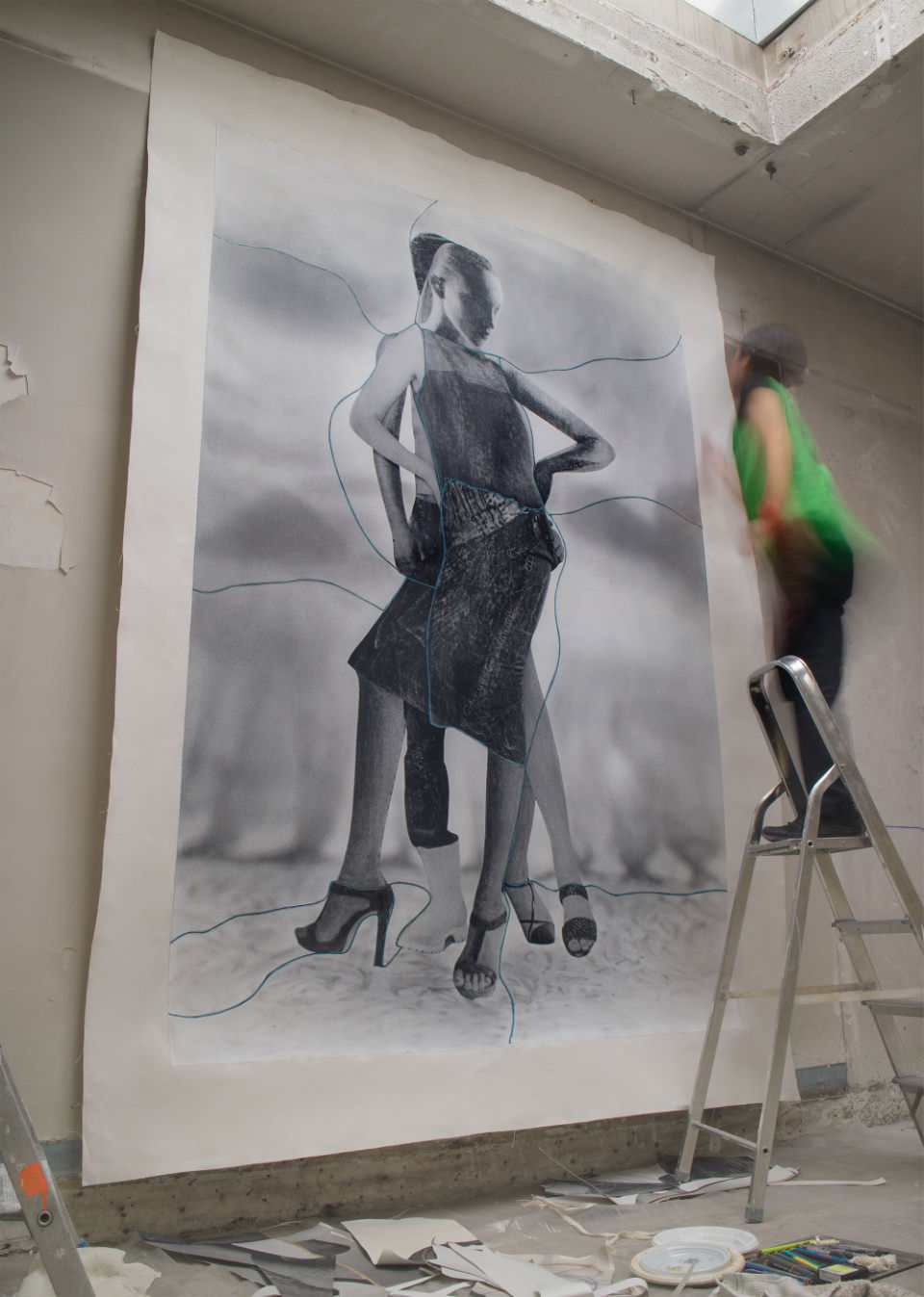
Yuki Onodera “Muybridge's Twist” No.51 charcoal, crayon, gelatin silver print,
collage on canvas, 289 x 207cm, 2016
I have to admit that one is a bit too fey [laughs]. The work itself is very modest, so I figured that if I didn't give it an elaborate title, it would be difficult to get people to stop and pay attention to it.
A title is crucial in letting a work stand on its own, in letting people view it without any explanation or commentary. Titles are much like doors that give us entry into a work. It's much easier to enter if there's a door, right? Of course, art lets you come and go without a door too. However, when a title is tied too obviously to the actual work, our interest fades — like, “What is this piece trying to say? Oh, that's what it's trying say.”
It's certainly tough to title a work. Sometimes I struggle with coming up with a title, and in other cases — such as How to Make a Pearl (2000 – 2001) and Eleventh Finger (2006) — I have the title before the actual work begins. Other times, I simply decide to take the title from the subject.
In contests where many similar photos are lined up together, I think the title has the power to appeal to the viewer.
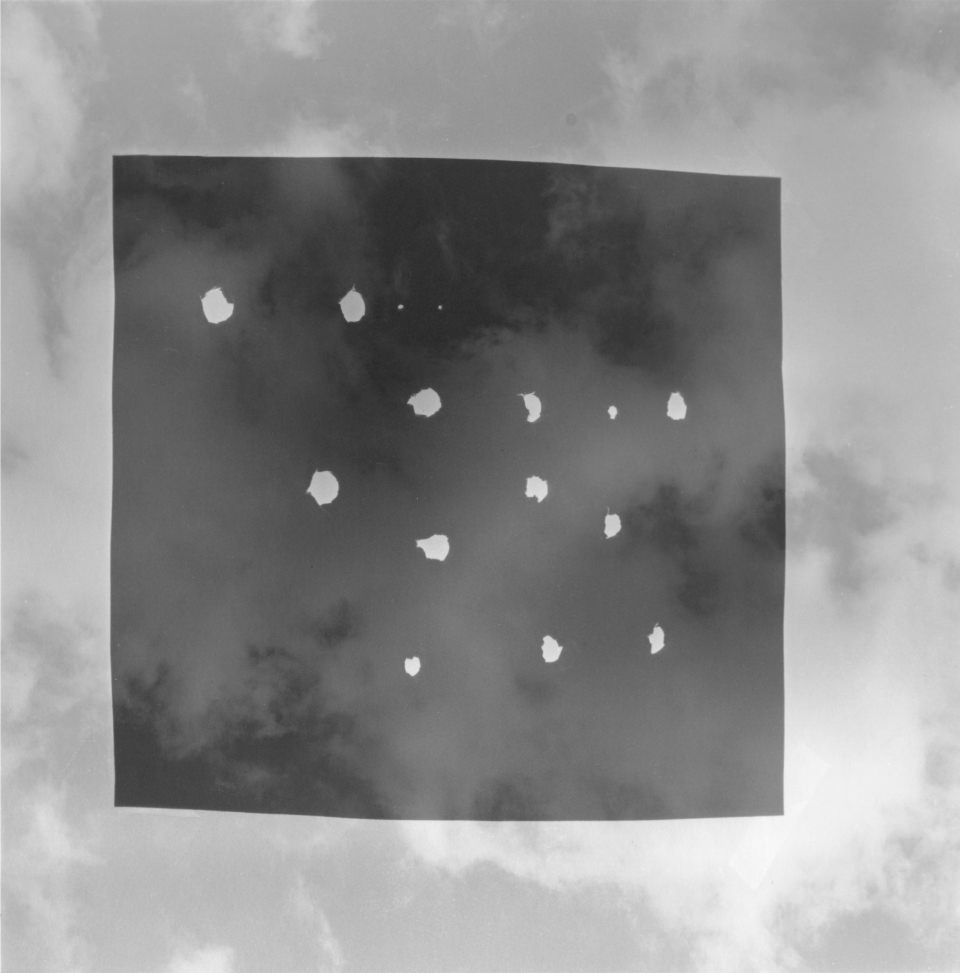
Yuki Onodera, “君が走っているのだ。僕はダンボの耳で待つ” No.1, gelatin silver
print on fiber base paper, 16.2 x 16.2cm, 1991
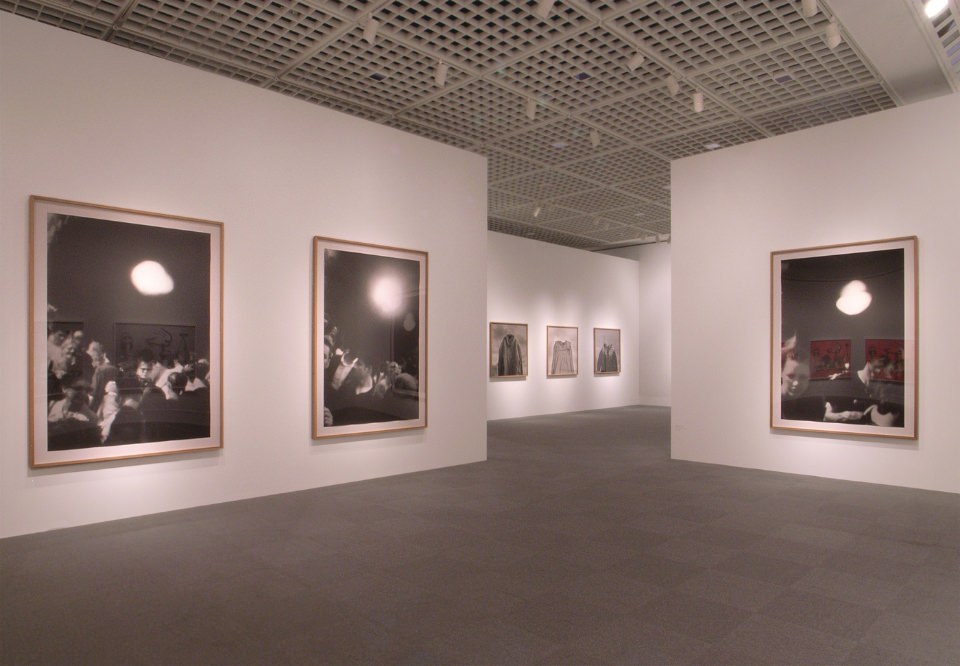
Yuki Onodera, 個展、東京都写真美術館、2010
My ideas aren't inspired by looking at art or watching movies; they sort of well up out of my daily existence. I need time to let the idea ferment in my mind, to think about what it really is, to connect it with something completely different as I watch it. For example, I might stare at a stereo camera for a long time and notice again that it has two lenses. Then I might wonder what would happen if I exposed these two lenses in two different places instead of just one. That was the inspiration for Roma – Roma (2004). So, it's not like my ideas come from some astounding revelation. It's like you have something on your mind that's been bothering you for a long time, and then one day, you suddenly get in the mood to start doing something about it.
In my case, the ideas I have in my head are a muddle of words, images, concepts, and techniques. Many works may seem to be almost purely conceptual, but they are still images, which is sufficient if we are talking about the visual arts. My works start from a chaotic place, where images are connected to words, and then gradually take shape from there.
It's not like I come up with something, start working on it right away, and voila! it's finished. It's not like that at all.
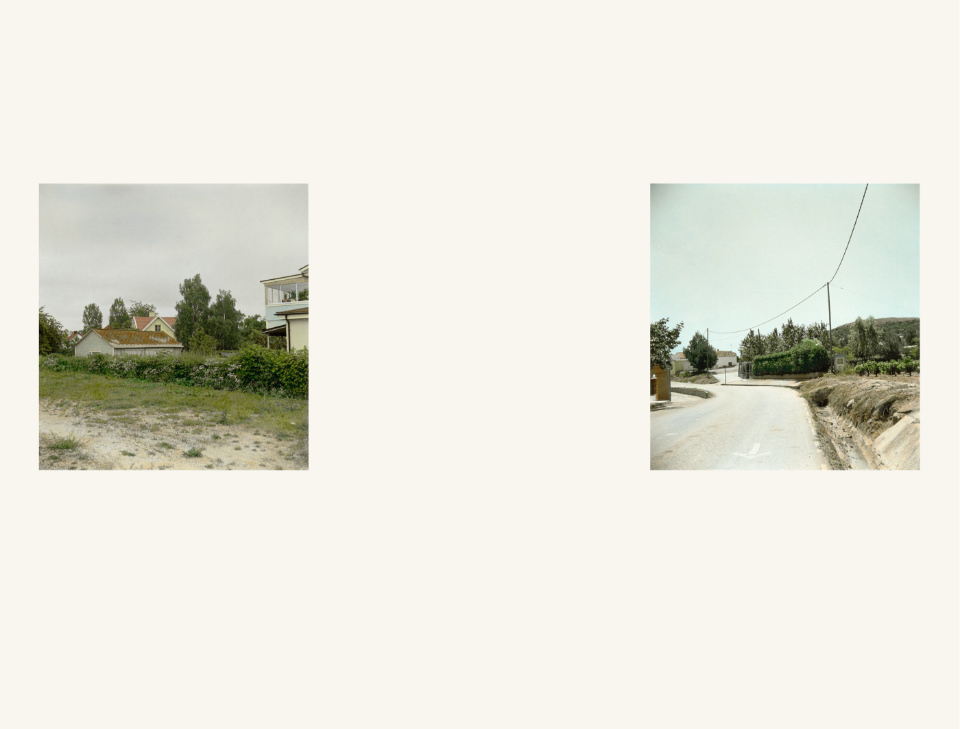
Yuki Onodera “Roma–Roma” No.50, oil on gelatin silver print, 49 x 37cm, 2004
2020 marks 25 years since the release of Portrait of Second-hand Clothes (1994), that some say is one of my most representative works. The director of The Ginza Space, Masaki Higuchi, handed me the serious responsibility of exhibiting all of these works together again to mark this quarter-century milestone and to share their timeless value with the public [laughs]. It was a challenging, but very gratifying, offer, so I explored ways to present the works again after 25 years in a distinctive space.
I had known Yumiko Chiba from Yumiko Chiba Associates very well from before, and we were already working on a collaboration together. My aim was to generate synergy by presenting “TO Where” at Yumiko Chiba Associates in tandem with The Ginza Space exhibition. For “TO Where”, I presented a new just-completed work, Darkside of the Moon, of three-meter-long collages as well as other works.
For the third exhibition, at Zeit-Foto Kunitachi, I exhibited works throughout the home of the late Etsuro Ishihara (1941 – 2016). I used a variety of approaches to exhibit the works, not only in the salon, but also in the hallways, staircases, and bathrooms. My idea was to show the middle of my works, from my formative works — like the work that won the New Cosmos of Photography award — that I couldn't fit in the other two venues. I did my best to fill the space, exhibiting nearly 50 works from Mr. Ishihara's collection and my own collection. Most importantly, a house is an everyday space that differs from a gallery. This translated into a different sensation for the viewers when taking in the works.
Having three locations gave me a rare opportunity to introduce the works I have been creating for the past 30 years in different ways. The exhibitions were originally scheduled for May but were postponed until September because of COVID-19. It was a difficult time to travel, but we were able to hold the events on the 25th anniversary. More than anything, I was exceptionally pleased and grateful that so many people came to see my works during this difficult time.
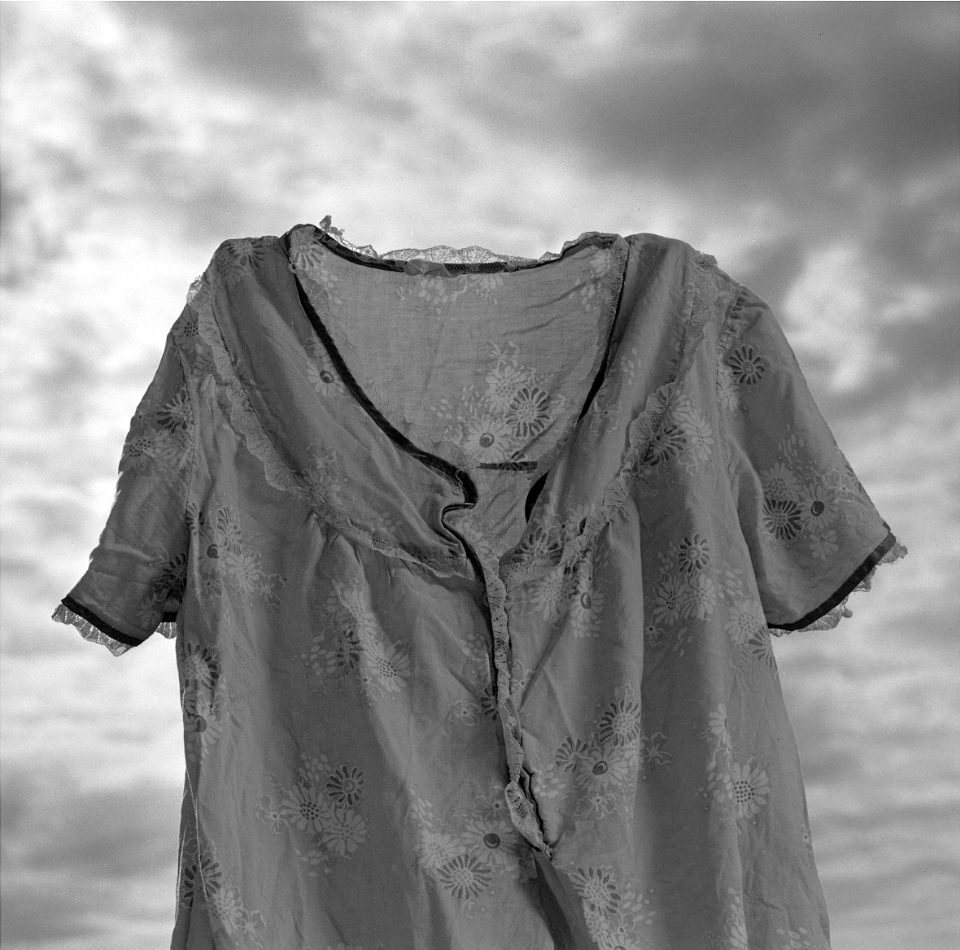
Yuki Onodera, “Portrait of Second-hand Clothes” No.4, gelatin silver print on fiber
base paper, 115 x 115cm, 1994
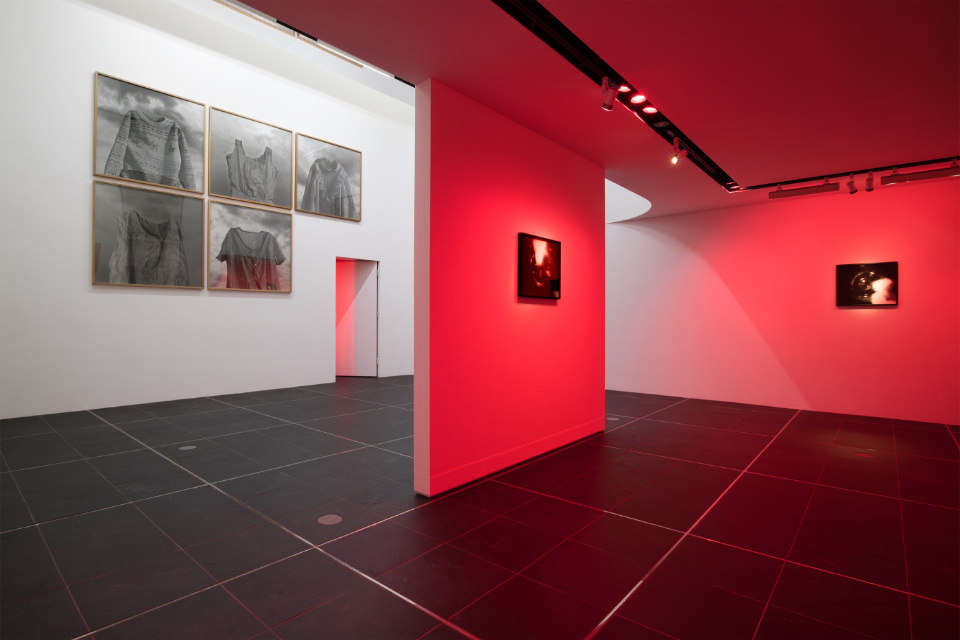
Yuki Onodera, solo show, “FROM Where” The Ginza Space, 2020
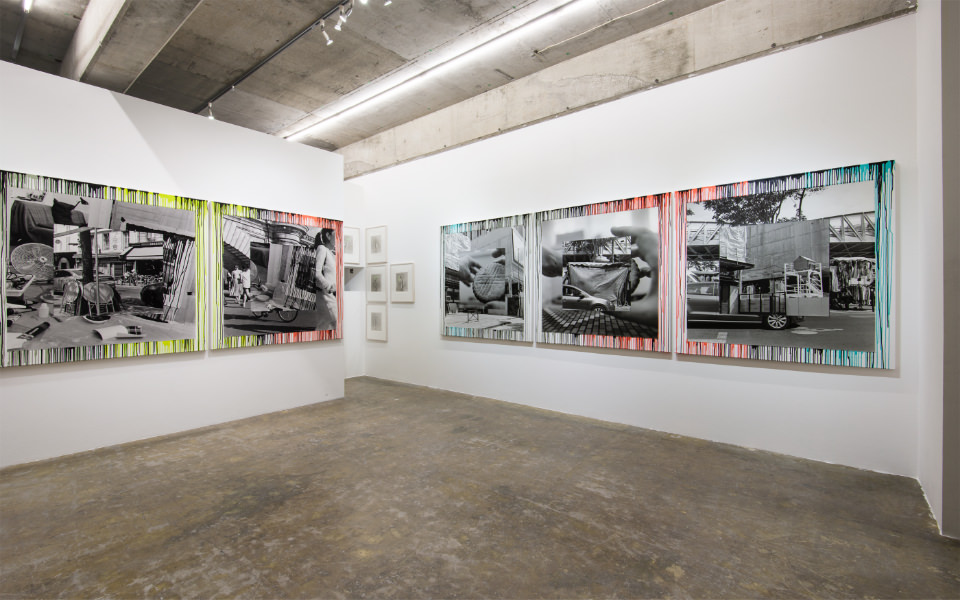
Yuki Onodera, “Darkside of the Moon” solo show, Yumiko Chiba Associates, 2020,
photo : Masaru Yanagiba
I feel my work probably stands somewhere in the middle, straddling both those fields. People in the contemporary art world call my work “photography”, while those in photography circles see it as “contemporary art”. I'm perfectly at home to be in that borderline area. And, perhaps paradoxically, this area has plenty of potential. In the world of photography especially, there is a tendency to reduce things down to formalities — elevating form over substance. So it's important to take a stance that's at a slight remove from photography. On the flip side, if you declare your work to be contemporary art, you risk giving the impression that you treat photography as just another material. I find it interesting to see that art today does not fit neatly into cookie-cutter styles, where you pick and stick with just one genre, be it video, photography, sculpture, or oil painting. Nevertheless, if I were asked “Is your work photography?”, then I would be forced to say yes, because my work assimilates so much of the history of photography, the structure of the camera, printing techniques, and other photography-related circumstances. This creates a situation where people on the contemporary art side learn about photography.
In essence, I travel back and forth between the two, and I can say that this has been my style for a long time.
In every sense, I think it's essential to not associate yourself with one place, and that's what I do. It's this instability that allows me to express myself. I suspect this is partly due to the fact that I live in Paris. After 30 years of living abroad, although by birth I am Asian and Japanese, I can't really call myself Asian or Japanese. But I'm not French either. This ambiguity likely manifests itself in my values and in the way I create my work.
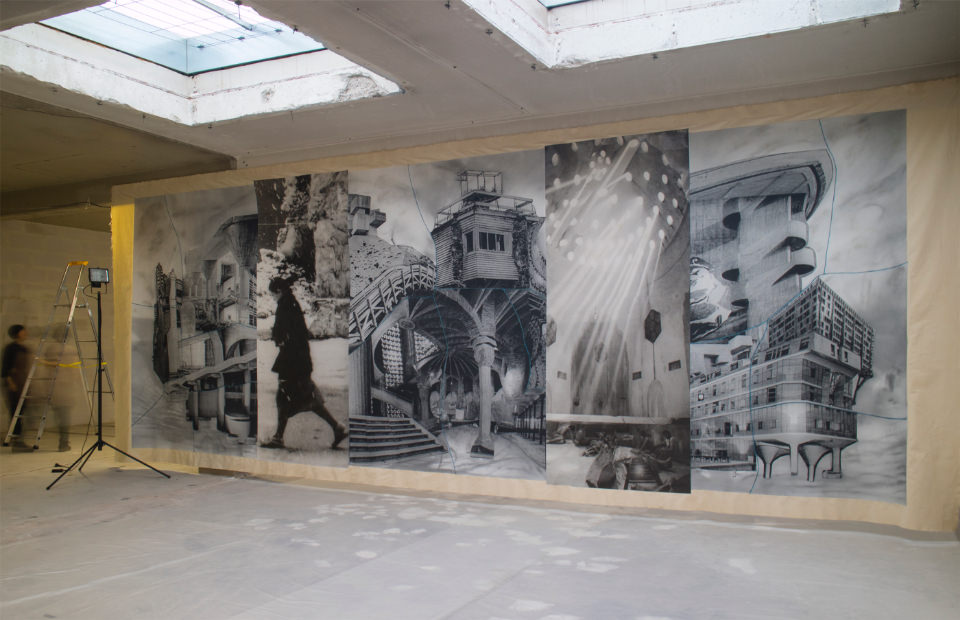
Yuki Onodera, Architectural Bodies and Events ”Guernapur” charcoal, crayon, gelatin silver print,
collage on canvas, 300 x 734cm, 2018

Yuki Onodera, 建築的身体と事件 Guernapurの制作風景, 2018
I've been in this position for a long time, and I believe it's quite beneficial to be in this position. I think you need to keep a certain distance from what you're doing, whether you're a novelist or whatever, and maintain a critical view on what you're creating. Perhaps it's meaningful to distance yourself from your homeland, as well as from the country you live in, and to scrutinize everything with a discriminating eye. But even if you do keep yourself at a distance, we still know that everything is connected. It's the Butterfly Effect.
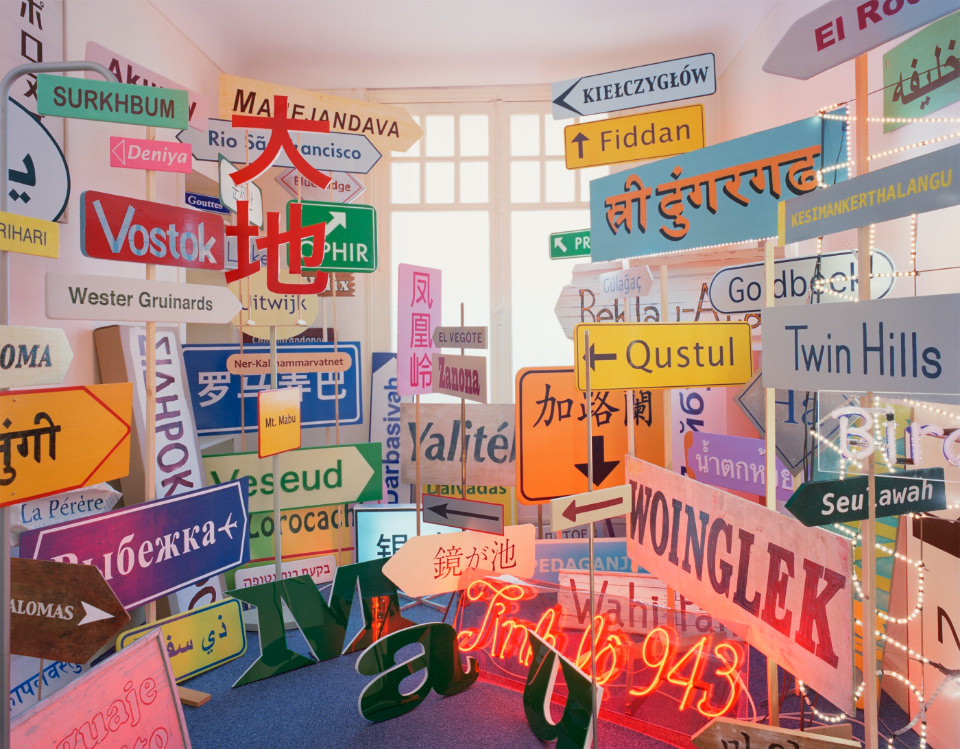
Yuki Onodera “The World Is Not Small-1826” No.20, archival pigment print on fiber
base paper, 148 x 190cm, 2012
I think younger generations nowadays may be more conscious in regarding artist as a profession. They seem to be much more serious about whether they can make a living as an artist. In my case, from the outset, I was convinced I would never make money from my art. Things I made believing they would never sell did, in fact, start to sell little by little, and eventually they sustained my livelihood. It took a long time, however, for my work to sell in any real way.
If I were to think about hardships, I guess I would say this. If you concentrate on selling your work from the beginning, you will probably drift away from art. It is paramount to keep going especially when conditions are hard. But there is no getting around the reality that persevering is not easy, given that almost all the work of an artist is like that of an unpaid volunteer.
In this day and age, the art market is wide open for anyone to see. So undoubtedly there are people purposefully creating work to match the market even while they are still in art school. And nearly everyone who wants to continue creating what they genuinely want to create needs some means, such as working part-time, to sustain themselves as artists.
However, it is not a good idea to strive to become an artist after you start on a career. You'll just end up being a Sunday painter. In today's Japan, university students seem to be solely focused on getting a job, no matter what their major is. I would rather have them ask themselves to what end are they studying what they like and build their future in a more constructive manner.
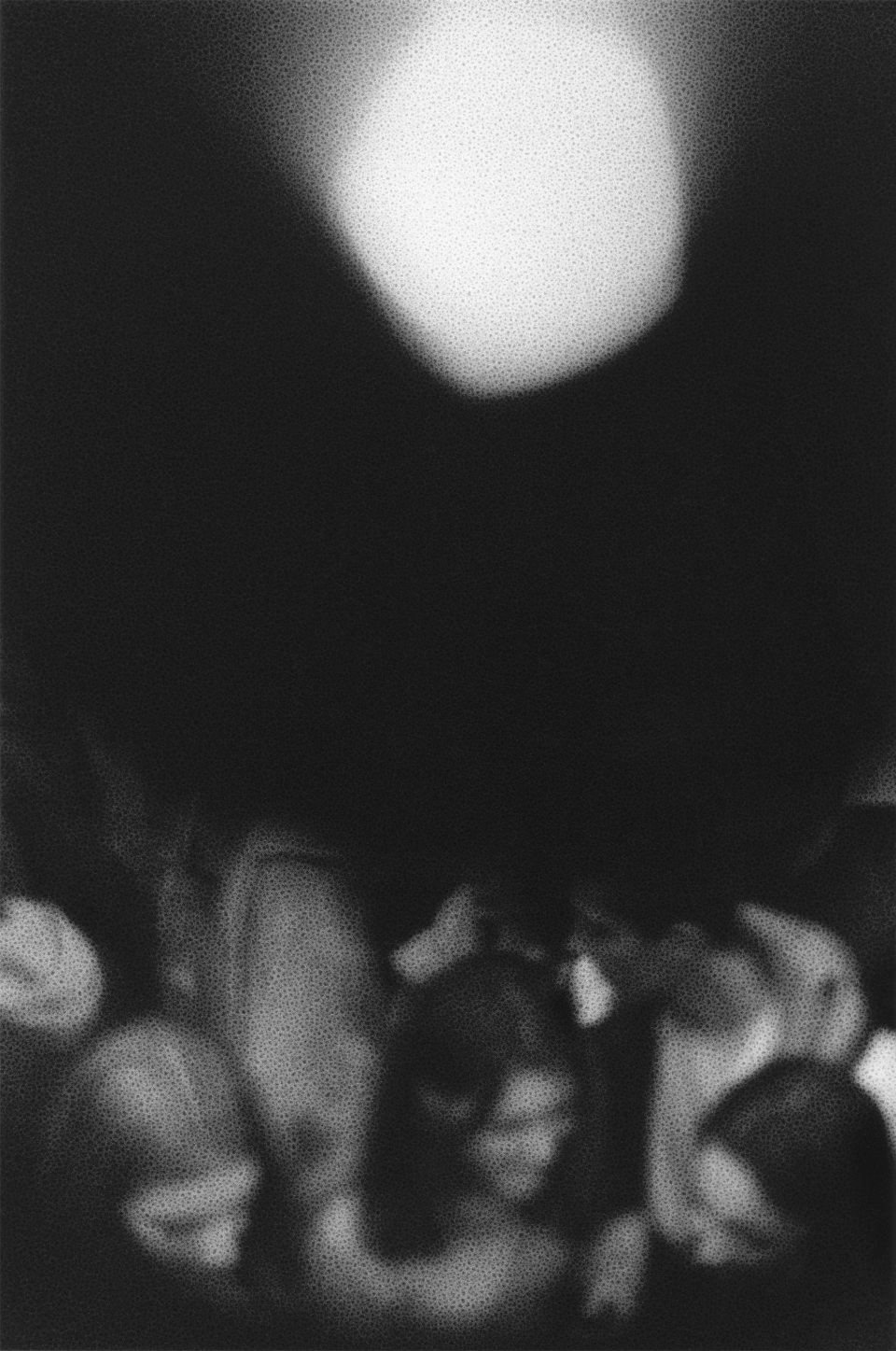
Yuki Onodera, “How to make a Pearl” No.10, gelatin silver print on fiber base paper,
218 x 155cm, 2000
I'm planning to hold a solo exhibition at a gallery in Switzerland this spring. Also, a new public photography center is opening in Mougins, near Cannes, France. It was originally scheduled to open in the spring of 2021, but due to COVID-19, it will now open in September. I've been asked to do a solo exhibition there in the fall. I plan to exhibit new works that I'll be making in the coming months.
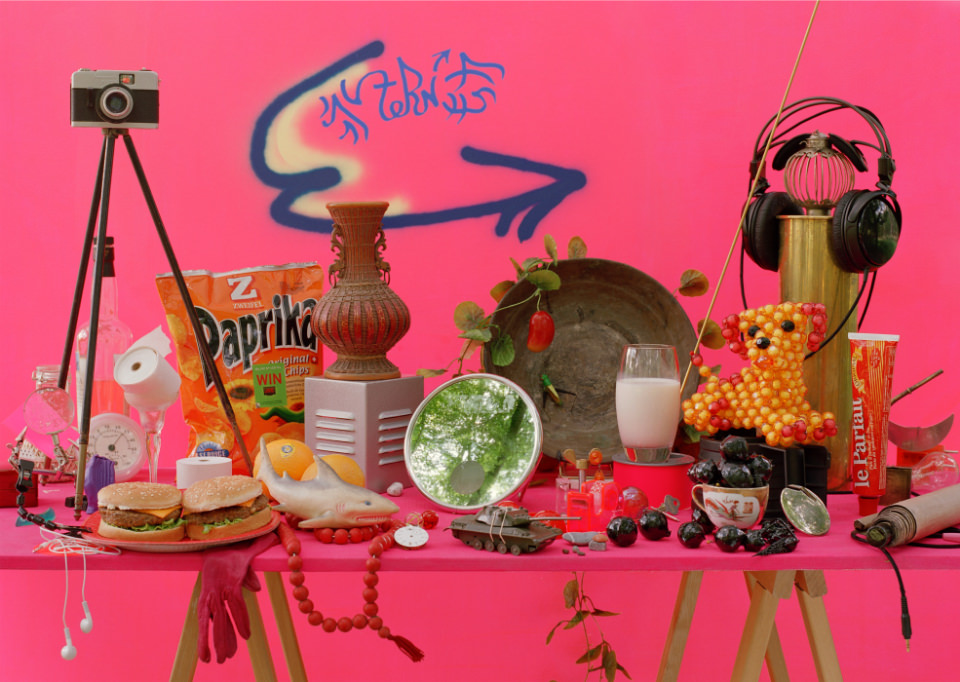
Yuki Onodera, “12 Speed” No.1 & No.9, archival pigment print on fiber base paper,
121 x 170cm, 2008
Yuki Onodera was born in Toky1962. In 1993, she established a studio in Paris and began to work internationally. Onodera's experimental work, which does not fit within schemas of “photography,” often poses two questions: what is photography, and what can be done through it? She uses any possible method to realize her works, whether this means taking photographs with a marble inside her camera, or creating a story out of a legend and traveling to the ends of the earth to shoot it. Onodera is known her two-meter-high darkroom prints by herself, oil painting on a photography, as well as for other original hands-on methods. Her work is held in collections around the world, including those of Centre Georges Pompidou, San Francisco Museum of Modern Art, The J. Paul Getty Museum, Shanghai Art Museum and The Tokyo Metropolitan Museum of Photography. Among other locations, her solo exhibitions have been held at The National Museum of Art, Osaka (2005), Shanghai Art Museum (2006), The Tokyo Metropolitan Museum of Photography (2010), The Museum of Photography, Seoul (2010) and Musée Nicéphore Niépce, France (2011) , Maison Européenne de la Photographie, Paris (2015).